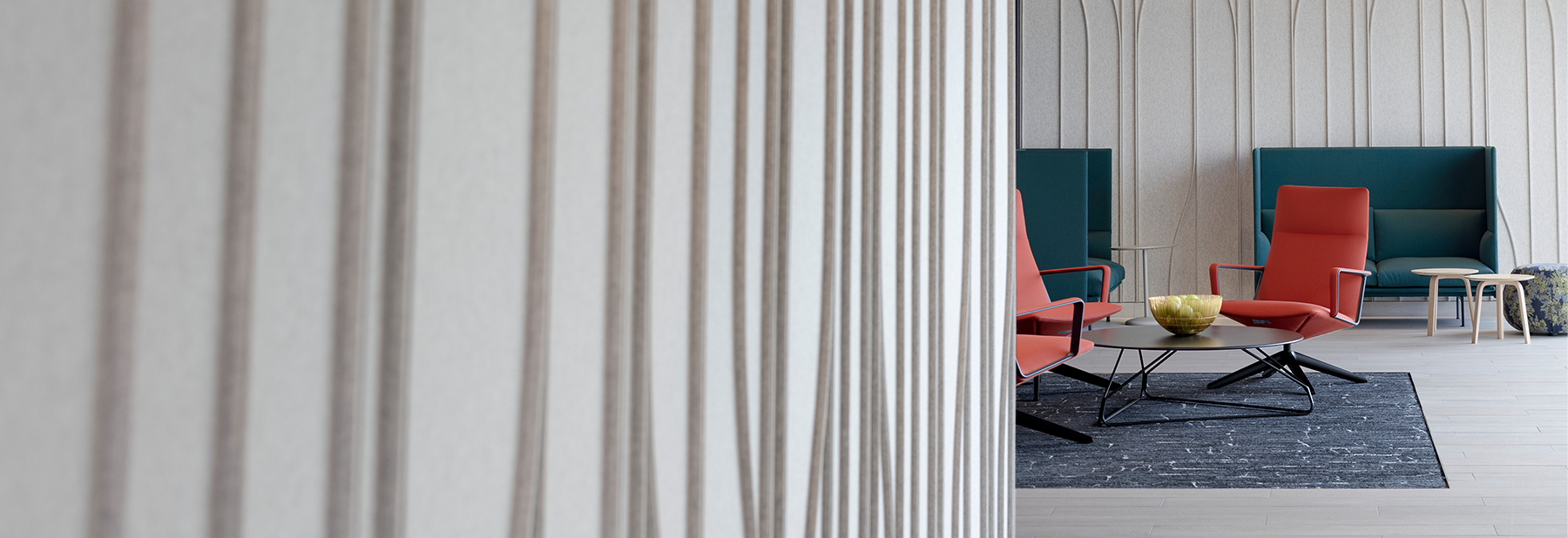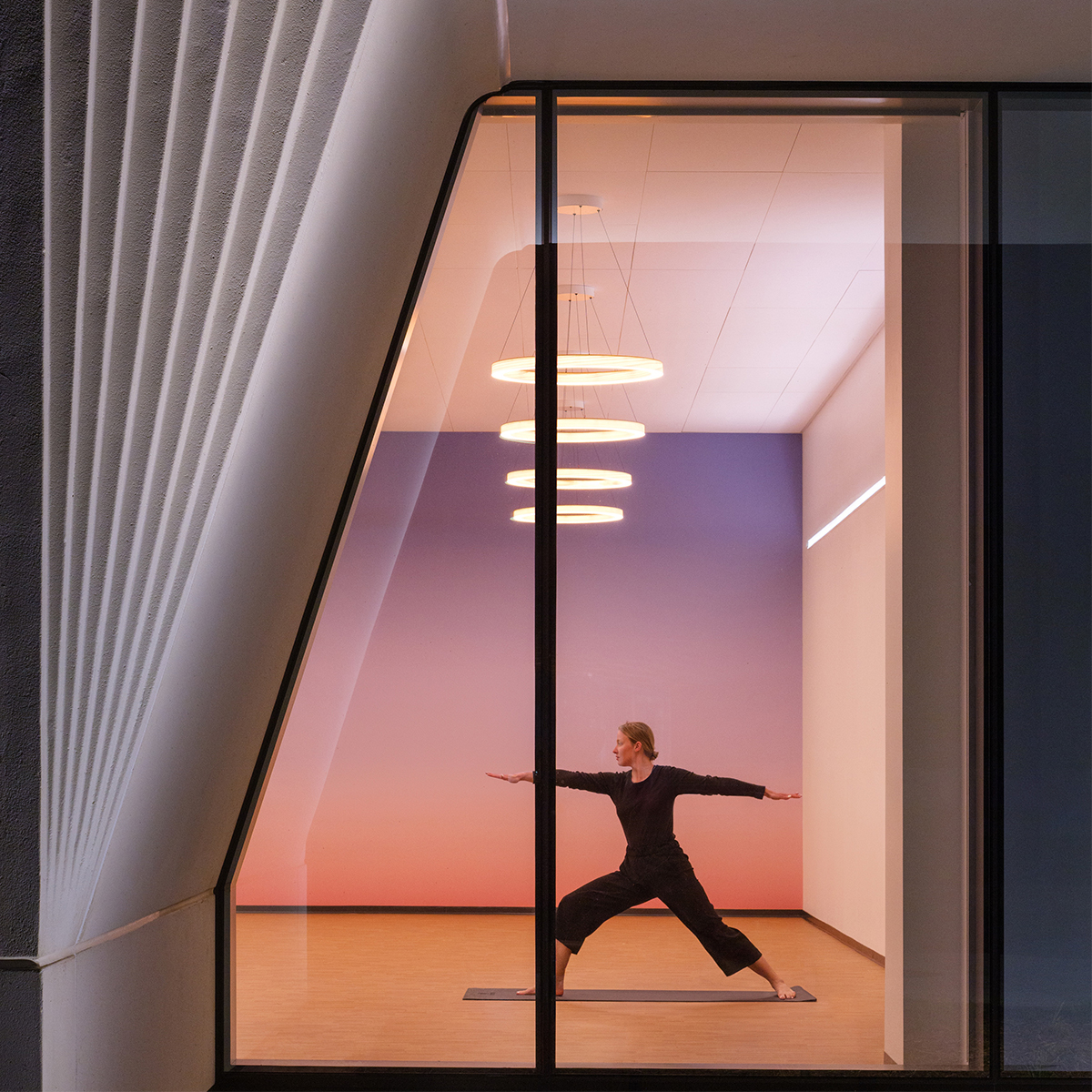
As part of an ongoing series, Flad is exploring the scientific workplace of the future, sharing insights with input from experts across the practice. These stories assess trends, innovations, and challenges that will shape the design of the scientific workplace environment of the future.
A workplace exists to support people driving toward a common goal; however, when designing a space to support those goals, it is important to acknowledge that people may prefer to take different routes. Just as a person's home reflects their personal tastes and preferences, a workplace environment should be designed to support individual personalities and preferences.
In a previous story, we explored the idea of comfort in a scientific workplace and designing for physical well-being with considerations such as lighting, air quality, sustainable materials, and nutrition. A holistic view of comfort and well-being extends beyond physical elements and includes mental and social aspects including relationships, perceived status within a team or organization, and creating a sense of belonging.
Scientific Workplace of the Future
Creating a Sense of Belonging with Thoughtful Design
As part of an ongoing series, Flad is exploring the scientific workplace of the future, sharing insights with input from experts across the practice. These stories assess trends, innovations, and challenges that will shape the design of the scientific workplace environment of the future.
A workplace exists to support people driving toward a common goal; however, when designing a space to support those goals, it is important to acknowledge that people may prefer to take different routes. Just as a person's home reflects their personal tastes and preferences, a workplace environment should be designed to support individual personalities and preferences.
In a previous story, we explored the idea of comfort in a scientific workplace and designing for physical well-being with considerations such as lighting, air quality, sustainable materials, and nutrition. A holistic view of comfort and well-being extends beyond physical elements and includes mental and social aspects including relationships, perceived status within a team or organization, and creating a sense of belonging.

With this in mind, it is worth noting that people experience and interact with the world around them in many ways. There is not a correct way of thinking, learning, and behaving. Most importantly, these differences are not weaknesses and can often be strengths.
More broadly, individuals have different personalities, preferences, and work styles, and design should reflect that. In fact, many of the high-performing, creative, and innovative individuals that are crucial for organizations whose mission is to advance scientific research may find working within the bounds of standard workplace environments difficult.
With that in mind, how can design support these differences and preferences? One obvious solution is to give people options beyond the standard rows of cubicles or open-office desks.
We've worked with a number of corporate life science organizations that have embraced this concept by providing a variety of work zones within a single building or campus, allowing employees to choose the space that meets their needs. In addition to flexible lab space, these zones include open collaborative spaces, library spaces where multiple people can work quietly, huddle rooms for small meetings or video calls, cafés for casual interactions, and even meditation rooms.
In addition to offering choices in work environment, organizations need to consider the impacts of design decisions on sensory experience within the workplace. The right combination of color, sound, lighting, temperature, and even smells can effectively create spaces that support neurodiverse needs. Without feeling too bland or too distracting, a well-curated space should provide a moderate amount of visual complexity to provide a level of comfort that allows people to focus while inspiring creativity and innovation.
Some of our clients have adopted the notion of unassigned seats, so employees can select the best environment for the day or for a specific task. This is a recognition that mindsets and space needs vary not only from person to person, but also throughout the day for the same person.

Empowering employees to adjust their space or location with options like sit/stand desks and the ability to seek a private space or collaborative space provides a comfortable level of control. Similar to the idea of flexible labs that can be easily reconfigured to adapt for new equipment or research initiatives, companies can offer employees office spaces that can be customized to their needs and preferences. While allowing for individual choices, some guidelines, such as ensuring each team has a home base within the building, will maintain a level of consistency.
Allowing people to select locations within their team's designated area also increases the opportunity to interact with more colleagues, which builds trust and relationships throughout the team and inspires new ideas and new collaborations.
The implementation and effectiveness of these ideas depends on company culture and other factors. For example, unassigned seats are an important aspect of the workplace culture for some of our clients, while others have experimented with unassigned seats and then returned to assigned seats for various reasons.
It is also worth noting that while organizations may see the benefit of collaboration spaces, they are often the first thing to be eliminated when difficult programming decisions need to be made, as that real estate can be more valued for additional lab space or equipment. Therefore, collaboration spaces often need a strong advocate within the organization in order to be implemented.
All of these concepts predate the pandemic and the resulting rise in hybrid work, though they have increased in popularity as people have become more aware of and less able to tolerate distractions and uncomfortable workspaces. Even minor things that have always been part of the work environment, such as hearing other people's conversations or phone calls, may now be more noticeable after experiencing alternative options working from home.
When it comes to avoiding distractions and providing a comfortable space that supports everyone, the paradox of beautiful design is that it is often invisible. By providing a workspace for scientists to work without mental or physical distractions, they may not notice that there aren't any distractions. In the end, that may be the goal: a workplace environment that seamlessly accommodates everyone. Non-verbal cues, such as a thoughtfully designed workplace, show that an organization cares about its employees, which ultimately results in improved well-being and better performance.
Flad's Ben de Rubertis, Russ Drinker, Staci Romano, Kim Reddin, Gabrielle Saponara, and Kim Swanson also contributed their insights for this story.